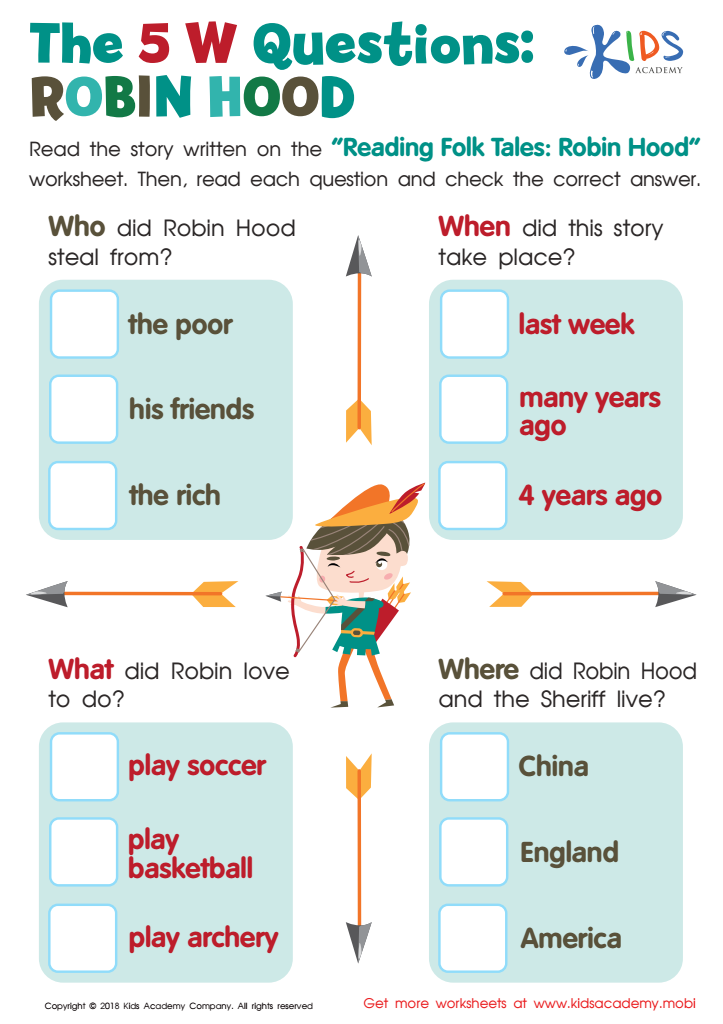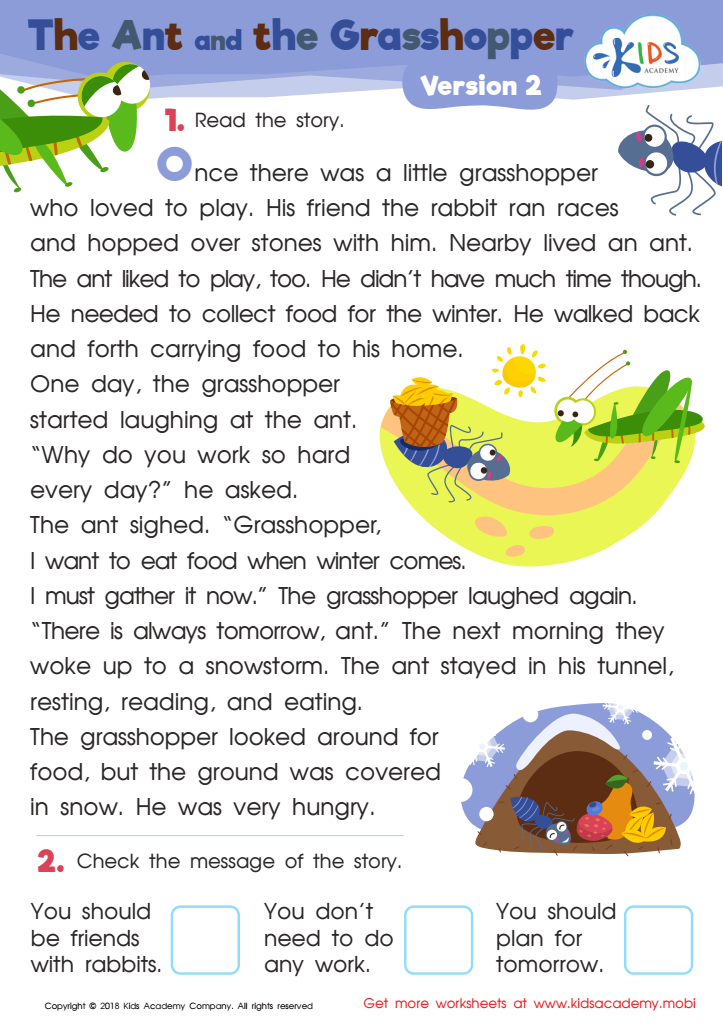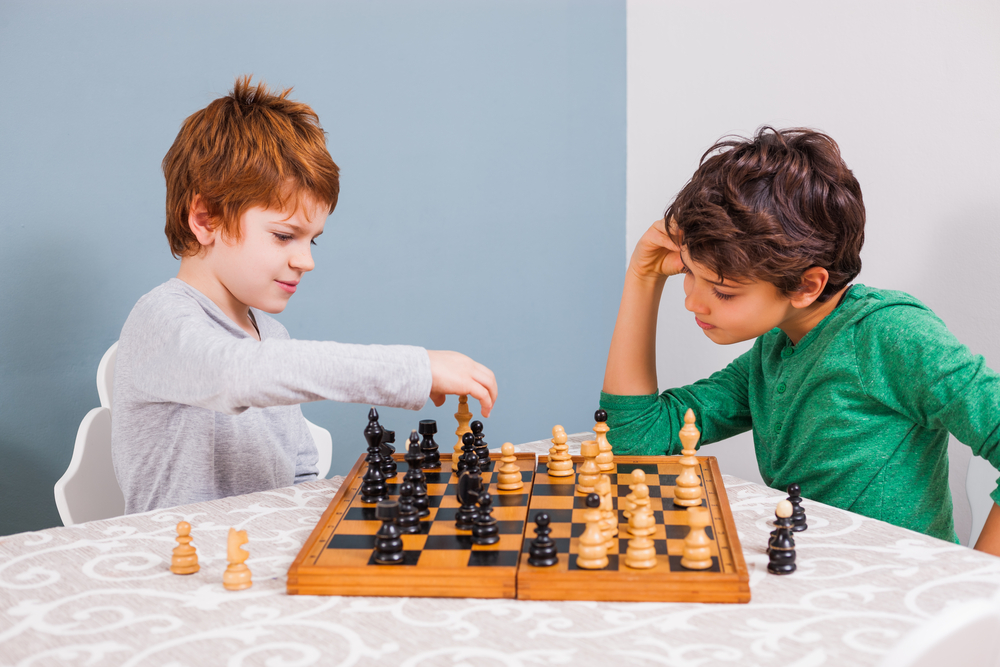Normal Fairy Tales worksheets activities for Ages 5-9
48 filtered results
-
From - To
Discover a magical world of learning with our Normal Fairy Tales worksheets and activities designed for children ages 5 to 9! Engaging and fun, these resources are perfect for sparking creativity while enhancing language skills, comprehension, and critical thinking. Your little ones will explore beloved fairy tales through exciting exercises like reading comprehension, story sequencing, character analysis, and imaginative writing prompts. Each worksheet is tailored to promote early literacy and inclusion, making learning enjoyable and accessible for every child. Dive into our enchanting worksheets today and watch your child's imagination soar as they embark on their fairy tale adventure!


King Midas Worksheet


The Boy Who Cried Wolf Part 2 Worksheet


The Boy Who Cried Wolf Part 1 Worksheet


“The Princess and the Pea” and “Cinderella” Worksheet


“The Princess and the Pea” or “Cinderella” Worksheet


Craft and Structure: Assessment 3 Worksheet


Little Red Riding Hood: Illustrations Worksheet


Puss in Boots Illustrations Worksheet


Robin Hood's Day Off Worksheet


Antonyms: Prometheus Worksheet


The 5 W Questions: Robin Hood Worksheet


Puss in Boots: Questions Worksheet


Synonyms: The Tortoise and Hare Worksheet


The Ant and The Grasshopper Version 2 Worksheet


Sequence: Jack and The Beanstalk Worksheet


Jack and Beanstalk Worksheet


Three Little Pigs Vocabulary Worksheet


Puss in Boots Vocabulary Worksheet


Rapunzel Characters Worksheet


Three Little Pigs Questions Worksheet


Rapunzel Questions Worksheet


Princess and the Pea Questions Worksheet


Cinderella / Cenerentola Worksheet


Three Little Pigs / Les Trois Petits Cochons Worksheet
Normal Fairy Tales activities for children ages 5-9 are vital for fostering creativity, critical thinking, and emotional intelligence. At this early age, children are highly impressionable, and engaging with fairy tales helps them explore moral lessons, problem-solving, and character development in a fun, relatable way. By participating in activities related to these stories, children learn to express their ideas and feelings, making connections to plot elements and characters that reflect their own experiences.
Additionally, these activities often encourage collaborative play, enhancing social skills such as teamwork and empathy. As children reenact tales or create their own versions, they develop language skills and narrative abilities, allowing for stronger communication and literacy foundations. Teachers can adapt these stories to align with educational goals, making learning both enjoyable and meaningful.
Furthermore, the themes often present in fairy tales—courage, kindness, perseverance—provide rich discussions for parents and educators. By examining these concepts, families and teachers can guide children in understanding and navigating real-life challenges. Overall, Normal Fairy Tales activities play a crucial role in holistic child development, nurturing imagination while promoting essential life skills. Hence, their integration into early education should be prioritized.

 Assign to My Students
Assign to My Students






.jpg)















